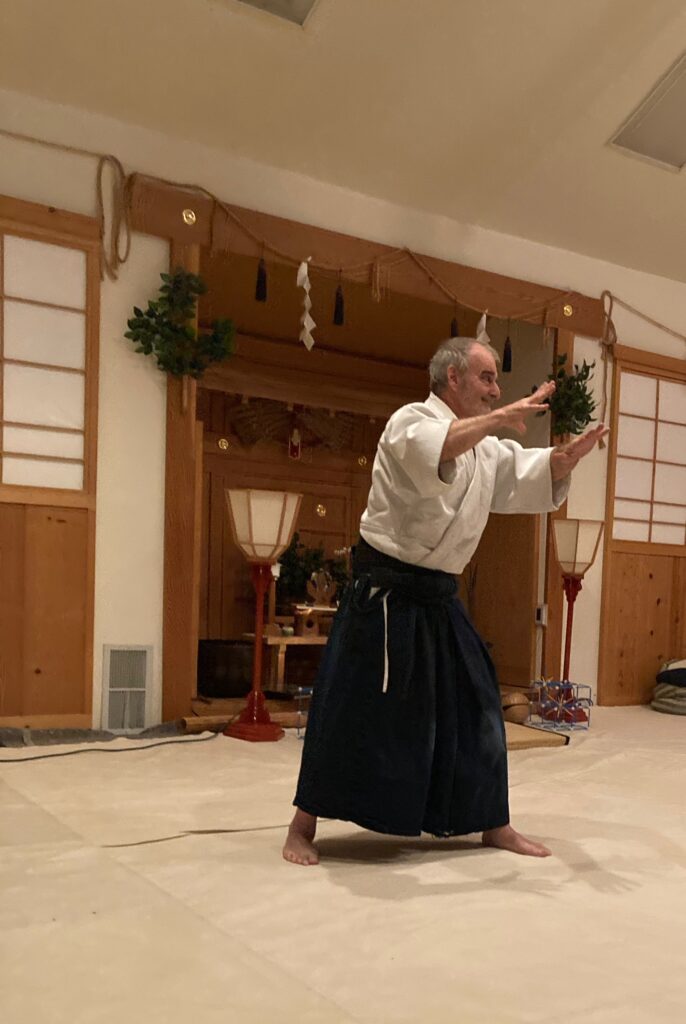
Contact
Kimbal Anderson, Sensei Komyozan@gmail.com 208-407-7590 1922 N 21st St., Boise ID, 83702Map
May Peace Prevail on Earth
— by Kimbal Anderson Sensei
So, we shall endeavor to fo do something… And I’m going, ‘okay, they don’t own the gods… We’re listening to the universe through that vehicle. But no, I don’t feel that at all.
I’d love to get a fox kit and show up at the shrine, and go ‘here you go! Here’s your new friend!’ They are quite fascinating creatures….
So play around. We’re working on now that I’m trying to help everyone get their own method… I can give you entry points, but develop your own sense of a method… But it’s physical. Words are a waste of time. Don’t argue with me, just try what I’m doing, first, and see if you can’t access some things you didn’t before. Because that’s my purpose. That’s why I’m doing it: is to help you access things that you didn’t access before.
We want to do that.
So right now I want to show you something in particular, so you may simulate more correctly what Barrish Sensei was doing.
So that ‘heavy’ part. At the elbows… To relax your body not by going “relax” but just “heavy”…
So the Tohei version…
Posted in Uncategorized

Paddy Slade’s Seasonal Magic is good for all the Mayday games that conjure serendipity in aid of a good Spring, Summer and harvest… Add to these the traditional helpers of Great Nature, and we have the imagery that feels perfect for the first day of May… the month named for one of the Seven Sisters, the wife to Hermes…
A ribboned hoop, with gold and silver balls. A wooden rod with the bark peeled in a spiral, and on top a painted cockerel. Birch branches, and branches of other trees – collected over night… the hawthorn, the rowan… (set up over the windows and door, but NEVER brought inside). Miniature maypoles and candies. Two hoops bound with flowers – one inside the other – and mounted on a stick, with a small female doll and a garland. The maypole itself, of birch or ash, hung about with garlands, ribbons, silver spoons, watches, tankards and symbols of the sun, moon and stars… rich fruitcake and rough cider to reward the musicians, the May queen and the May king, sitting in a bower with their attendants dancing around them… Announcing the May Queen’s arrival with a bugle… or a lur! A wreath of forget-me-nots, and on a pole: a wooden stag’s head… a wood-wose… the bale-fires lit with nine types of wood, and driving the cattle between the two fires, on the hilltop… round cakes of oatmeal broken in four, and who-ever gets the last piece jumps the fire. Butter, milk and eggs left when the fires are out… whisky and oatmeal for the foxes, crows and eagles, a golden lion and on either side a red and a blue hobby horse… birch bundles to ensure fertility… the fly agaric growing beneath the birch… the burning of straw houses or of effigies… a greenwood hand-fasting, washing of faces in May morning dew, a fiddler leading the dancing line serpentine, two dancing circles – deosil and widdershins one inside the other – amongst the dancers: Maid Marion, Robin Hood and his Merry Men… the dancing procession to bless every house…
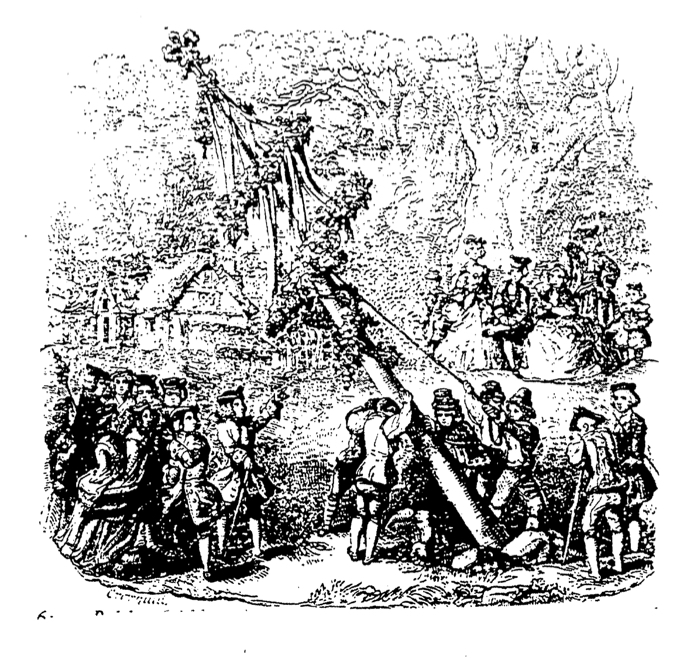
Posted in Articles
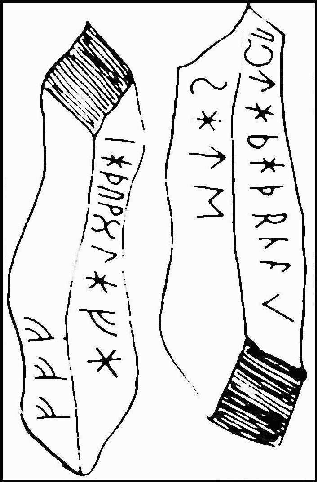
But, in fact, the two shortest of the Blekinge inscriptions have their own syntax, so we may distinguish the standing stone, which uses Megalithic Culture language (the Germanic substrate); the two smallest stones, which seem to be close to Standard Average European and raise the spectre of the Megalithic Cuture elite talking to the folks who actually moved the stones and grew the food and had spread out from a South-of-the-Pyrenees Ice Age refugium: these peasantry – we call them ‘Western Hunter-Gatherer’ – also spoke a form of Afro-Asiatic, related to Berber or else Cushitic…

…and the stone intended for a church, which used a syntax related to Latin…
And with the standing stone we see the habit of writing poetry for the ‘big moments’. So,, probably originating with the public pronouncements of the Iron Age elite, and, as we know, a custom maintained by Germanic peoples in their mead-halls…
Posted in Uncategorized
Alison-san is making the most delicious shortbread cookies: Blue Hen Cookies – available at Lark and Larder, the Boise Coop, FarmDeliver, Savory n’ Sweet, and Ketchum Kitchens….
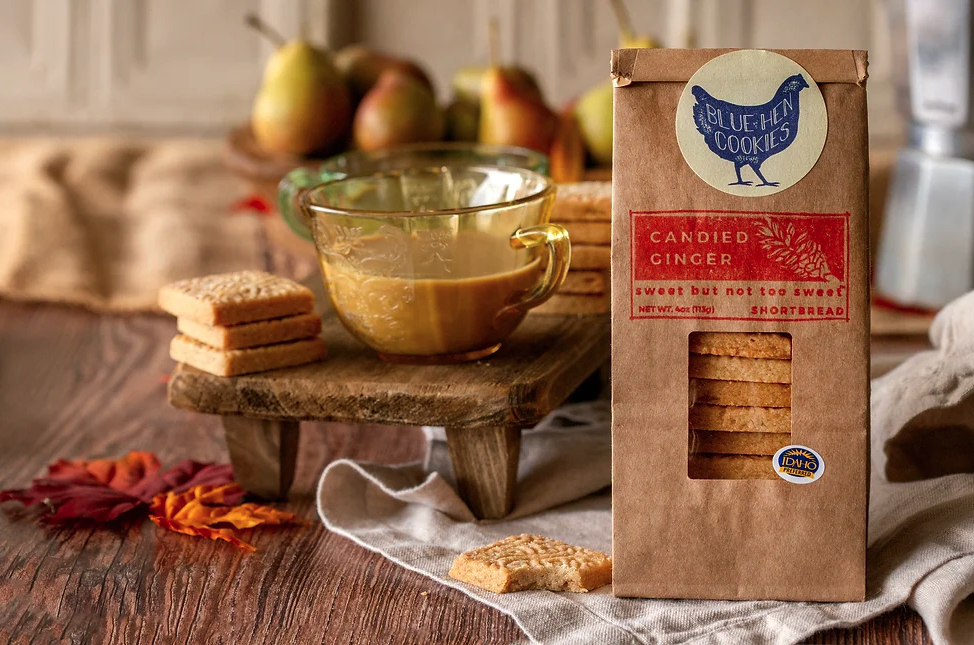
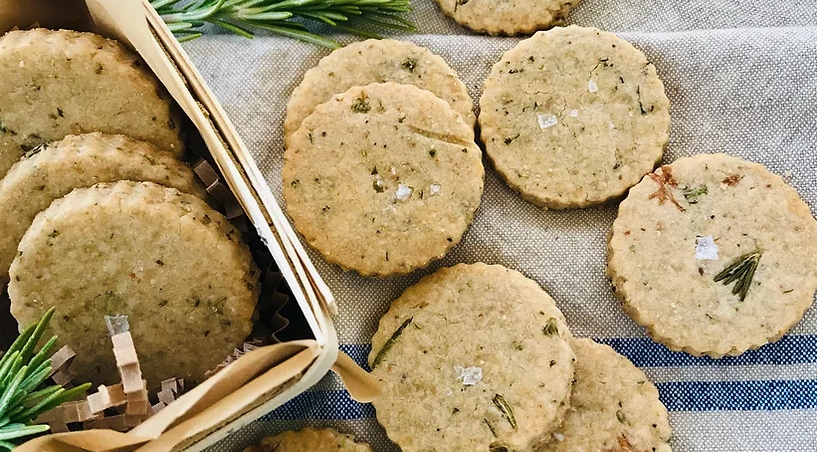
…and more…
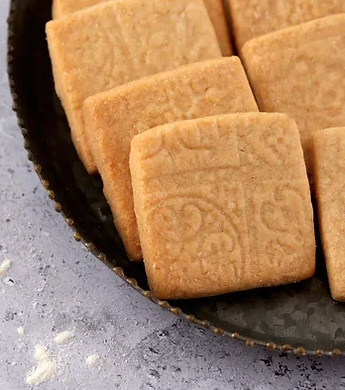
Posted in Articles
Aikido is a gem of many facets – sometimes it seems that every one of O’Sensei’s students remembered a different teacher, and of course, many, many different styles have been preserved and developed – but here is one facet that clicked into focus for me recently:
what if O’Sensei spent his time away from Iwama and Tokyo coherently pursuing what he felt to be his “mission in life”?…
what if he spent his time away from Iwama and Tokyo creating and nurturing a network of dojos run by Omoto-Kyo, ex-Omoto-Kyo and Ko-Shinto believers ( hand-picked deshi, some of them raised, almost, as members of his family) – – – and ex-Kamikaze pilots, too (!) – often with his own name on the sign – in places – and close to shrines…
Posted in Articles